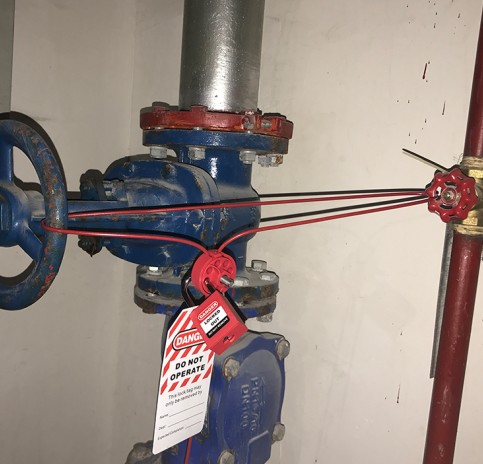Assignment of responsibilities (who is the authorized employee who performs the lock-in, the person in charge of the implementation of the LOTO plan, performs the lock-in listing compliance, monitors compliance, etc.).
This is also a good opportunity to outline who will supervise and record any necessary and required training, and who will provide the training. Although your written procedure does not necessarily require a name, it should at least identify the job function or the title of the person in charge (for example, site EHS team leader, EHS manager, etc.). OSHA requires periodic inspections of written procedures at least annually. As part of the standardization, you should set a repeat inspection date—perhaps after seasonal business production may be at a low point, after regular improvement events, or after machinery and equipment are moved. This way, your team can plan the same amount of time each year.
In the U.S. states that have their own OSHA plans, it is important to include any differences between federal and state plans in your written plan.
As an appendix to the written procedure, it is also recommended that you complete an asset list or machinery/equipment list by location.

Going beyond compliance, we recommend creating a best practice program that includes machine-specific photos that identify energy isolation points. These should be posted at the point of use to provide employees with clear and intuitive instructions. it is also:
A unified and consistent timetable not only helps to ensure that the plan is properly maintained, it also helps to ensure that the annual audit is completed on time. They can also:
An effective lockout and tagout plan is most successful when it includes a complete safety map (locks, tags, and equipment) and appropriate lockout procedures, plan documents, employee training, periodic inspections, or other procedural elements.
Adequate training of employees is very important to communicate the process and ensure that your plan is running effectively. Training should include not only OSHA requirements, but also your own specific program elements, such as your machine specific program. Training for a specific site should be customized for the following categories:
Standardizing your lockout and tagout plan will not only ensure your compliance, but also simplify your entire process, making it easier to maintain, simplify training, and improve overall usage and worker safety. Although standardizing your program can be daunting, there is still help available.
Post time: Sep-04-2021






